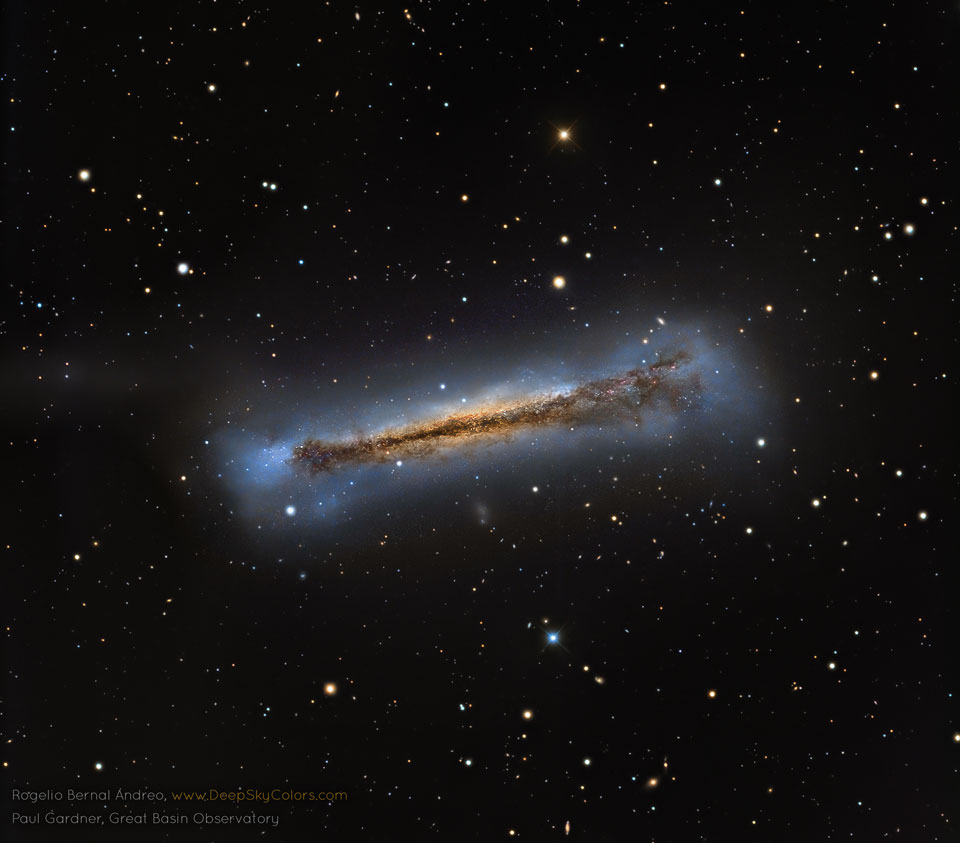
Explanation: What do spiral galaxies look like sideways? Featured is a sharp telescopic view of a magnificent edge-on spiral galaxy NGC 3628, a puffy galactic diskdivided by dark dust lanes. Of course, this deep galactic portrait puts some astronomers in mind of its popular moniker, The Hamburger Galaxy. The tantalizing island universe is about 100,000 light-years across and 35 million light-years away in the northern springtime constellation Leo. NGC 3628 shares its neighborhood in the local Universe with two other large spirals M65 and M66 in a grouping otherwise known as the Leo Triplet. Gravitational interactions with its cosmic neighbors are likely responsible for the extended flare and warp of this spiral's disk.
This is from Japanese Spaceship
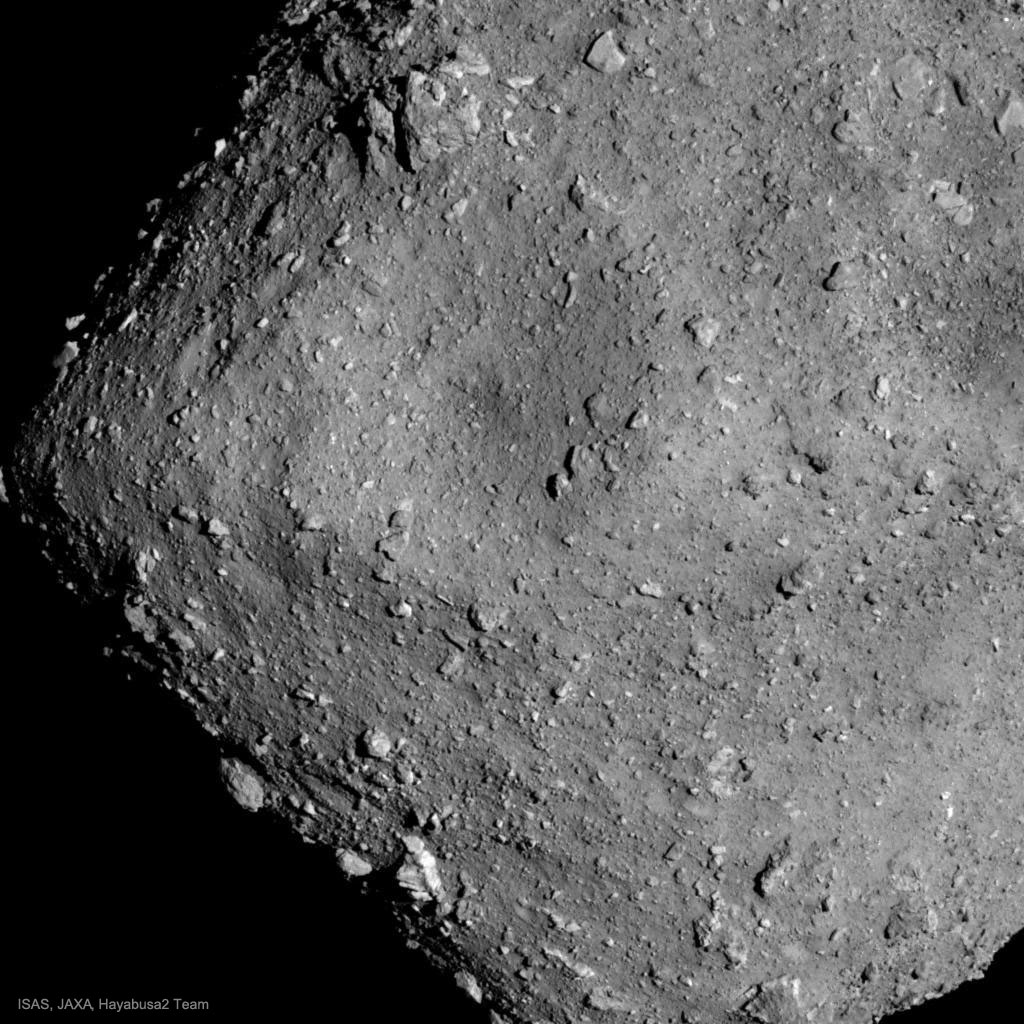
Explanation: This big space diamond has an estimated value of over 80 billion dollars. It's only diamond in shape, though -- asteroid 162173 Ryugu is thought to be composed of mostly nickel and iron. Asteroids like Ryugu are interesting for several reasons, perhaps foremost because they are near the Earth and might, one day in the far future, pose an impact threat. In the nearer term, Ryugu is interesting because it may be possible to send future spacecraft there to mine it, thus providing humanity with a new source of valuable metals. Scientifically, Ryugu is interesting because it carries information about how our Solar System formed billions of years ago, and why its orbit takes it so close to Earth. Japan's robotic spacecraft Hayabusa2 just arrived at this one-kilometer wide asteroid in late June. The featured image shows surface structures unknown before spacecraft Hayabusa2's arrival, including rock fields and craters. Within the next three months, Hayabusa2 is scheduled to unleash several probes, some that will land on Ryugu and hop around, while Hayabusa2 itself will mine just a little bit of the asteroid for return to Earth.
Kiwi-s are blessed with nature
2018 August
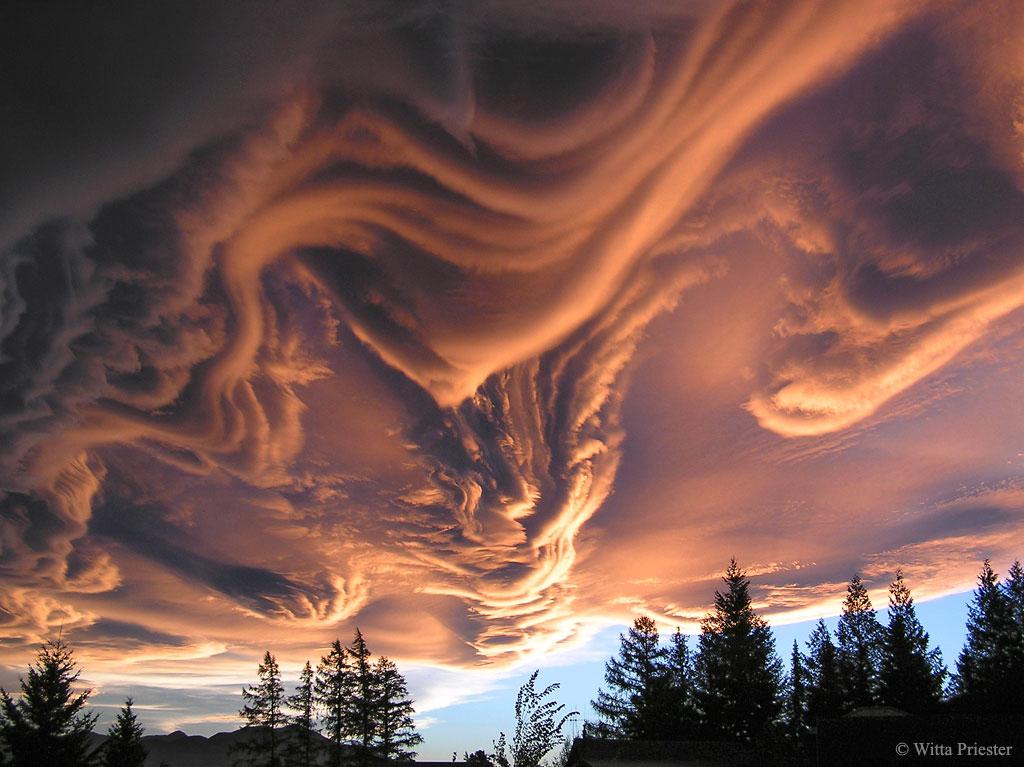
Asperitas Clouds Over New Zealand
Image Credit & Copyright: Witta Priester
Explanation: What kind of clouds are these? Although their cause is presently unknown, such unusual atmospheric structures, as menacing as they might seem, do not appear to be harbingers of meteorological doom. Formally recognized as a distinct cloud type only last year, Asperitas clouds can be stunning in appearance, unusual in occurrence, and are relatively unstudied. Whereas most low cloud decks are flat bottomed, asperitas clouds appear to have significant vertical structure underneath. Speculation therefore holds that asperitas clouds might be related to lenticular clouds that form near mountains, or mammatus clouds associated with thunderstorms, or perhaps a foehn wind -- a type of dry downward wind that flows off mountains. Such a wind called the Canterbury arch streams toward the east coast of New Zealand's South Island. The featured image, taken above Hanmer Springs in Canterbury, New Zealand, in 2005, shows great detail partly because sunlight illuminates the undulating clouds from the side.
TiTan (One of 63 Moons Ar Saturn)
2018 May
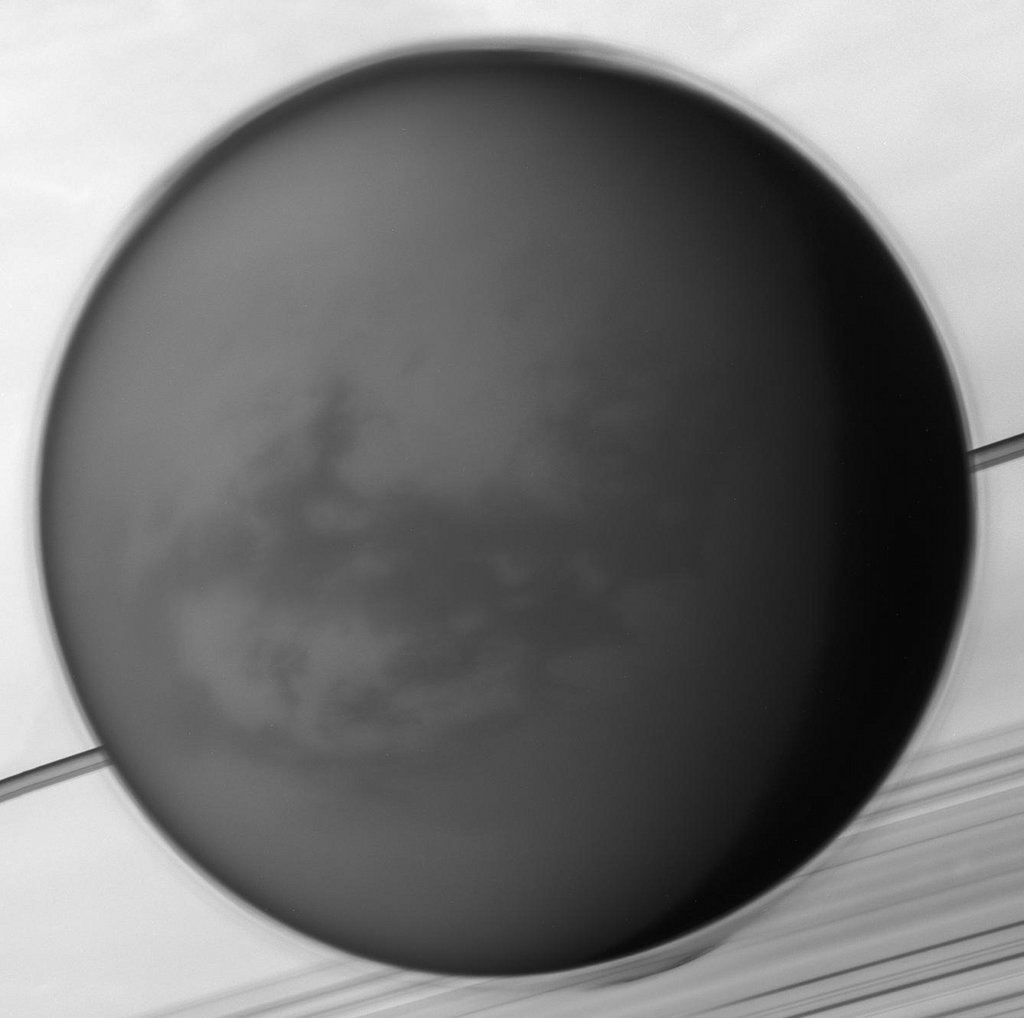
Titan: Moon over Saturn
Image Credit: NASA, JPL-Caltech, Space Science Institute
Kiwi-s are blessed with nature

Explanation: What kind of clouds are these? Although their cause is presently unknown, such unusual atmospheric structures, as menacing as they might seem, do not appear to be harbingers of meteorological doom. Formally recognized as a distinct cloud type only last year, Asperitas clouds can be stunning in appearance, unusual in occurrence, and are relatively unstudied. Whereas most low cloud decks are flat bottomed, asperitas clouds appear to have significant vertical structure underneath. Speculation therefore holds that asperitas clouds might be related to lenticular clouds that form near mountains, or mammatus clouds associated with thunderstorms, or perhaps a foehn wind -- a type of dry downward wind that flows off mountains. Such a wind called the Canterbury arch streams toward the east coast of New Zealand's South Island. The featured image, taken above Hanmer Springs in Canterbury, New Zealand, in 2005, shows great detail partly because sunlight illuminates the undulating clouds from the side.
TiTan (One of 63 Moons Ar Saturn)

Explanation: Like Earth's moon, Saturn's largest moon Titan is locked in synchronous rotation. This mosaic of images recorded by the Cassini spacecraft in May of 2012 shows its anti-Saturn side, the side always facing away from the ringed gas giant. The only moon in the solar system with a dense atmosphere, Titan is the only solar system world besides Earth known to have standing bodies of liquid on its surface and an earthlike cycle of liquid rain and evaporation. Its high altitude layer of atmospheric haze is evident in the Cassini view of the 5,000 kilometer diameter moon over Saturn's rings and cloud tops. Near center is the dark dune-filled region known as Shangri-La. The Cassini-delivered Huygens probe rests below and left of center, after the most distant landing for a spacecraft from Earth.
Fool's Day Always Pay
2018 April 1
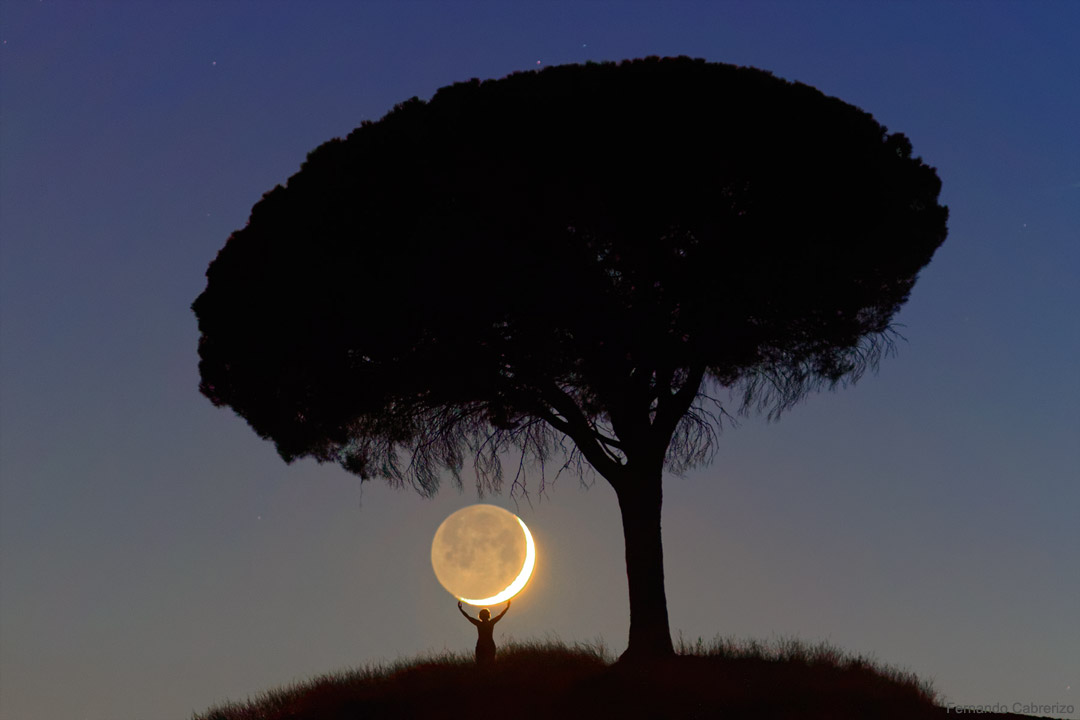
I Brought You the Moon
I love you so much that I brought you the Moon.
Please take it before this tree becomes more interested.
Also, the Moon is heavier than I thought.
And I foolishly picked it up by the hot side by mistake.
Please take it and keep it always as a token of our love and, well, April Fool's Day.
Voyager 1 snapped this picture from a distance of 7.25 million miles. It was the first to include both the Earth and the Moon in a single frame taken by a spacecraft.
Fool's Day Always Pay

Please take it before this tree becomes more interested.
Also, the Moon is heavier than I thought.
And I foolishly picked it up by the hot side by mistake.
Please take it and keep it always as a token of our love and, well, April Fool's Day.


No comments:
Post a Comment